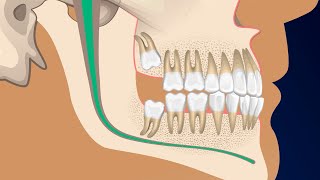


Wisdom teeth removal is a common dental procedure that many people undergo in their late teens or early twenties……

Wisdom teeth removal is a common dental procedure that many people undergo in their late teens or early twenties. While the extraction process itself is straightforward, the post-surgery swelling and discomfort can be challenging to manage. Fortunately, with the right care, you can minimize pain and promote faster healing. Here’s what you need to know about swelling after wisdom teeth removal and how to reduce it effectively.
Why Does Swelling Occur After Wisdom Teeth Removal?
Swelling is a natural response to any surgical procedure, including tooth extraction. When wisdom teeth are removed, the body sends inflammatory cells to the area to begin the healing process. This leads to puffiness, tenderness, and sometimes bruising around the cheeks and jaw. Swelling usually peaks within 48 hours after surgery and gradually decreases over the next few days.
How to Reduce Swelling and Discomfort
Managing swelling properly can make your recovery more comfortable. Here are some effective ways to ease the discomfort and speed up healing:
1. Apply Ice Packs Immediately
Using an ice pack on the outside of your cheek for 15-20 minutes at a time can help constrict blood vessels and reduce swelling. Apply ice for the first 24-48 hours after surgery, taking breaks between applications to prevent skin irritation.
2. Keep Your Head Elevated
Lying flat can increase blood flow to the area, making swelling worse. Instead, keep your head propped up with pillows while sleeping or resting to minimize inflammation.
3. Follow a Soft Diet
Chewing hard or crunchy foods can irritate the surgical site and increase swelling. Stick to soft foods like yogurt, mashed potatoes, soup, and smoothies for the first few days to avoid unnecessary strain on your mouth.
4. Stay Hydrated and Avoid Straws
Drinking plenty of water helps with healing, but avoid using straws. The suction created can disrupt the blood clot at the extraction site, leading to a painful condition known as dry socket.
5. Take Prescribed Medications
Your dentist may prescribe pain relievers or anti-inflammatory medication to help with discomfort and swelling. Follow the dosage instructions carefully and avoid overuse of over-the-counter medications.
6. Rinse Gently with Salt Water
After 24 hours, you can start rinsing your mouth with warm salt water to keep the area clean and reduce inflammation. Mix ½ teaspoon of salt in a glass of warm water and gently swish without vigorous rinsing.
When to Call Your Dentist
While mild swelling and discomfort are normal, contact your dentist if you experience:
These could be signs of an infection that requires professional attention.
Final Thoughts
Swelling after wisdom teeth removal is temporary, but proper aftercare can significantly reduce discomfort and speed up recovery. By following these simple yet effective tips, you can ensure a smoother healing process and get back to your normal routine sooner. If you have any concerns, don’t hesitate to reach out to your dentist for guidance. Looking for a kid-friendly dentist? Check out childrens dentist in Mitcham!
About Bio.
Ansley has 12 years of experience in the dental world. You can find his thoughts at root canal treatments blog.
